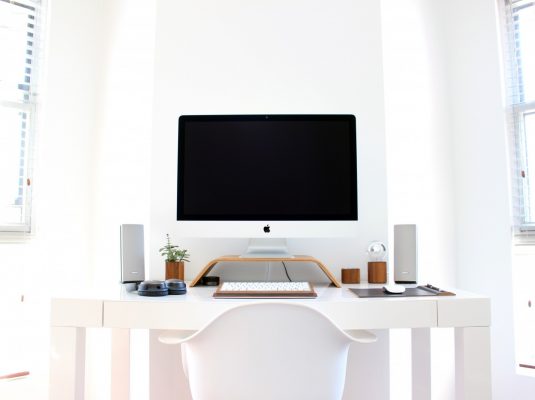
Designing A Home Office
When I speak to clients, I’ve noticed that incorporating a home office into the redesign of our homes is becoming more and more important to us. People are choosing to sacrifice a guest bedroom or a second living room to accommodate the space needed to either work from home, to store books, to study in or just to organise their personal files and have somewhere to sit and concentrate on something.
Designing a home office is very personal and varies greatly depending on how many people will use it, what they’ll use it for, the size of the room and so on.
I’m currently working on a project for a client which includes renovating a guest room into a modern and bright home office workspace. This particular client is a doctor and the criteria for the project is to create a space where he and the family can go when they need to study and concentrate as well as store all their professional and personal paperwork.
This article is going to lay out a step by step guide on converting what might currently be a guest bedroom or unused living room/dining room into a well laid out work space.
1. Light and colour
When choosing a colour for the walls of your home office I’d advise you to look at soothing neutral tones. Neural doesn’t mean just beige. You can find neutral blues, greens, pinks etc. Think pastel colours. You want the colour to be easy to live with and something that isn’t going to distract you too much. That being said, colour is very personal. If you wanted to experiment with a bolder colour consider using it on just one wall, possibly the one directly behind where you’ll be sitting, and then an off white on the other walls.
If the white minimalist look appeals to you I say go for it. If you’re concerned about it feeling too bland then you can consider adding interest with colourful art prints or painted shelving, or perhaps a statement bold colour chair.
Ideally, the home office would have lots of natural light for during the day. Ways to make the most of your natural light are to use curtain holdback to hold the curtains back from the sides of the windows when the are open, and if you use a blind also, perhaps consider using a sheer material or a roman blind which can be fully up in the day, and all the way down after dark.
If you’re like me and still like to use a pen and paper then a good reading light is very important. There’s a huge variety of desk lamps these days. I usually prefer warm white rather than cool white for bulbs. However, keeping in mind that cool white light is best for working, perhaps consider using cool white bulbs for the home office ceiling and in lamps.
2. Layout
If possible I’d advise you to have your sitting work position to be facing a window. Facing a wall all day can be soul destroying. If you can’t be facing the window directly, or if you find the sun is in your eyes too much then you may prefer to be sitting side on to the window. In fact, research has shown that being at a 90-degree angle to light rays can elate someone’s mood, due to the way the light enters the eye.
Another aspect of the layout to note is that the room, and you as you travel around the room, will flow better if you can access the desk from both sides. This would mean positioning the desk in the centre of the room, rather than pushed up next to a wall.
3. Storage
For a well-organised home office, you’ll need adequate storage space and a storage system. Keeping personal and business files separate is important and personally, I use box files which I label and keep on separate shelves.
When everything is organised and stored it makes life so much easier and makes the home office work day so much more efficient when you know exactly where something is when it’s needed.
4. Maintenance
Maintaining an organised home office means dedicating time now and then to cleaning, weeding through old files and shredding. If you feel like making a change in the home office you could try adding some life with flowers or a house plant. A nice window box could give you a pretty view and perhaps help some inspiration to flow your way. Depending on the theme you go for you could choose a piece of artwork or some accessories to help achieve the look you want for your home office.
5. Your chair
A comfortable chair is life changing. Try them in person before you buy as there are lots of different options available. Ergonomic chairs offer support and help with postural alignment. The perfect chair for you could make all the difference between having a constructive and enjoyable work day, and not.
If you’d like to hire me as your interior designer, click the link.